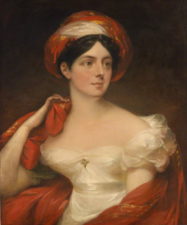3 March. On this day in 1911 the highly successful popular novelist Katherine Cecil Thurston made a new will. She was not quite thirty-six. The chief beneficiary was the man who was soon to become her fiancé, Alfred Thomas Bulkeley Gavin, who was also new in her life, and who was a doctor. The will named him a co?executor. On 5 September Katherine Thurston was found dead in a hotel room, and though the cause of death was officially declared to be asphyxia (she had a history of “fainting attacks” which may have been epileptic), rumours sprang up that she was killed by poison, in either a murder or a suicide.
Thurston, an Irishwoman settled in London, had a sparkling social personality. She had divorced her first husband, E. Temple Thurston, in 1910 on grounds of his desertion and adultery. He was a published writer (indeed, it was he who had first suggested that she should try her hand at writing) and The Times, reporting the divorce, said that he had left her because of her dominant disposition, and because she “was making more money by her books than he was.”
Thurston’s plots tend to the sensational. The heroine of her first novel, The Circle, pursues success on the stage although this means abandoning her Russian immigrant father and the crippled young man who loves her. The hero of her second novel, John Chilcote, MP (which brought her success and fame), is not Chilcote but another man, John Loder, who bears a striking resemblance to him. Chilcote is a drug addict, and employs Loder to stand in for him during a period of incapacity, then during later, longer such periods. Loder makes a success of Chilcote’s career and gradually takes over his life entirely, marrying his wife and, after Chilcote dies of an overdose, permanently assuming the identity which he, Loder, has largely built up.
The protagonist of Thurston’s The Gambler, 1906, is the daughter of an inveterate, ruined gambler, and herself narrowly escapes succumbing to the lure of the tables. That of The Mystics, 1907, manages to convince the members of a far-out religious sect that he is the prophet they are waiting for. That of Max, 1910, is a Russian noblewoman who flees the prospect of a loveless marriage and becomes an artist and a cross-dresser. If middle-class women lived humdrum lives, it was clearly a relief to read about the sensational. But the one among Thurston’s novels that became notorious in the light of its author’s end was The Fly on the Wheel, whose Irish heroine, torn between two men and hemmed in by the restrictions of being a woman, commits suicide by poison.
Far from us be it to deflect attention from the work of women writers to their lives. But the circumstances are intriguing: the new man in Thurston’s life, his medical knowledge, the parallel (if the death was suicide) with her own book, all suggest something more sensational, more like her own plots, than death from an already-diagnosed medical condition. There are haunting parallels with the death of Laetitia Landon (LEL) in 1838, four months after her wedding, from what the inquest determined to be an accidental overdose of prussic acid, though no prussic acid was to be found anywhere near the scene. Landon, whose poems were just as successful and much more admired than Thurston’s novels, had for years had her relationships with men picked over by gossips. She died in Africa, because the man she had just married was a colonial official. He sounds, too, as if when it came to the point he was unwilling to go through with the marriage. Potentially suspicious circumstances abound here too, like the disappearance of documents including the letters Landon wrote the night before she died, and the refusal of the Colonial Office to investigate.
The deaths of Landon and Thurston are the only results generated by searching the entries in Orlando: Women’s Writing in the British Isles from the Beginnings to the Present for “murder” as the cause of death. A parallel search for “accident” also brings scanty results. But there are fifteen definite or possible suicides recorded, from Elizabeth Siddal (a possible) to Sarah Kane. The roll-call between these two is heart-rending. Charlotte Perkins Gilman and Margaret Laurence killed themselves courageously in face of painful and inescapable death from disease, and others, too, faced agonies that they chose not to endure. But for some it seems that to be a woman writer was in itself unbearable. Anna Wickham elucidated this in her “Fragment of an Autobiography”: “There have been few women poets of distinction, and, if we count only the suicides of Sappho, Laurence Hope and Charlotte Mew, their despair rate has been very high.” Katherine Thurston was not a poet of distinction and gave no sign of suffering from despair. Perhaps it was just her sensation-seeking public who saw a likeness between her death and the melodramatic death of her last heroine.
All information here is from Orlando, an electronic resource published by Cambridge University Press, by subscription, at http://orlando.cambridge.org

